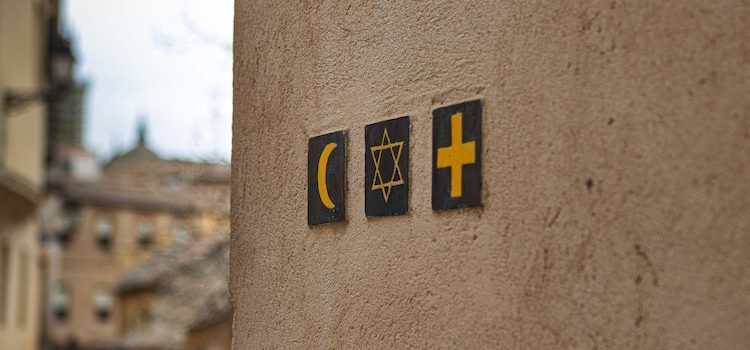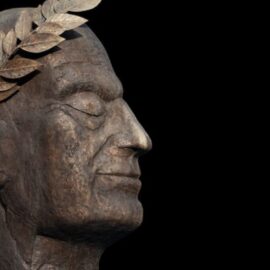

This article is an excerpt from the Shortform book guide to "The Righteous Mind" by Jonathan Haidt. Shortform has the world's best summaries and analyses of books you should be reading.
Like this article? Sign up for a free trial here .
What do the New Atheists believe about religion? Are they right?
In The Righteous Mind, social psychologist Jonathan Haidt argues that the New Atheists get it wrong when it comes to religion. Their claim that religion is a virus is at odds with the benefits that religion provides to society.
Read on to learn how Haidt believes the New Atheists are wrong about religion.
The Emergence of the New Atheists
After the 9/11 attacks, many Americans, mostly on the right, blamed Islam as a religion that encouraged violence. In contrast, many Americans on the left maintained that Islam itself is a peaceful set of beliefs, and fundamentalism was the problem.
However, certain commentators on the left took the opportunity to attack all religious institutions, a movement that became known as “the New Atheism.” Scientists Sam Harris, Richard Dawkins, and Daniel Dennett (along with journalist Christopher Hitchens) were the leaders of this movement. Each of them studied religion as a group of supernatural beliefs. Each argued that religion essentially took over the minds of its practitioners, duping them into rejecting facts. They based these beliefs on the assumption that reason is in charge of emotion.
First, they argued, our brains evolved to detect faces, so we may see something like a face in the clouds, but we will never see clouds in a face. Humans start to talk about all of the seemingly supernatural events or objects they see in nature together and form a cogent supernatural belief out of false positives. Essentially, as humans incorrectly detect more humanity in nature, and discuss it with one another, they come to explanations that all of them can accept. This is the foundation for the beginning of organized religions.
Second, cultural evolution happened. Only the best constructed and most sensical religious belief systems were maintained and mutated to become the most persuasive as possible, just like natural selection.
Dennett and Dawkins both describe religions as viruses, forcing their hosts to spread them around, implying that science should root out religions like it does viruses.
Religion’s Durkheimian Model
The New Atheists are incorrect that religion is a virus. In fact, religion regularly helps society become more communal. We’ll call this the “Durkheimian Model,” because it follows Durkheim’s logic that certain beliefs and practices create community.
Religion is a self-sustaining practice that can help increase community through believing, doing, and belonging. Each sustains the other two. When you believe in a Christian God, for example, you’re more likely to join a church. This leads you to both feel a greater sense of belonging in your community and have a stronger belief in God. A sense of belonging may lead you to volunteer work with a church group and also a greater belief in both God and the institution of the church. The table below illustrates this phenomenon:
This table flies in the face of the New Atheist understanding of religion. However, we can accept part of the New Atheists’ definition without understanding religion as a virus. Scientists who see religion as an adaptation agree with the first point of the New Atheists’ model: Religion grew as a result of the growth of cognitive abilities that led groups of humans to misinterpret the natural as supernatural.
However, in the cultural evolution period, the religions that succeeded were not necessarily the most persuasive, but the ones that made groups more cooperative. Anthropologists Scott Atran and Joe Henrich believe that religion grew because of the group competition that we’ve already discussed. Having something that binds your group together will make your group more successful, so groups with less effective religions would develop or adopt more effective ones.
Gods also helped to create moral societies: They punished bad behavior and rewarded good behavior. If people think someone can always see and judge them, as we’ve learned, they’ll be much more likely to act in a morally upstanding way.
Anthropologist Richard Sosis studied communes in the 19th century to prove the point that religion binds: Of those based around a religious concept, 39 percent were functioning after 20 years. Of those that weren’t religious, only six percent functioned after 20 years. The sacrifices that the communes demanded were much more successful when they were sacralized.
To put it another way: All of the practices that the New Atheists wanted to root out actually helped solve the problem of cooperation without kinship.
Example: Bali Rice Farming
Biologist David Sloan Wilson used the example of rice farming in Bali to explain this concept. Rice farming requires hundreds of people to operate a complicated and large irrigation system that has to be drained and filled at just the right time.
In part of Bali, the rainwater comes down a volcano through the soft volcanic rock. The Balinese, over a period of centuries, carved lots of pools into the mountain and created irrigation systems out of them. And then at the top of the volcano, they built a huge temple to worship the “Goddess of the Waters.” They had a high priest and 24 others staff the temple.
Their social organization was something called a subak, which was a group of families that practiced democracy. There were a lot of small subaks within the larger system, so at every fork in the irrigation system, they built a temple. All the subaks downstream of these forks would worship the god in that temple (ultimately, this totaled hundreds of different gods and temples). This created a shared community amongst the Balinese and allowed them to share water and other resources more equitably and resolve disputes.
We can understand each of the gods in this system as a “maypole.” If there was only one person dancing around a maypole, they’d probably look ridiculous. But add in many more, and the maypole dance becomes a social function—people can achieve more together than they can alone, and religion provides the social fabric to keep people together.
50,000 years is more than long enough for gene mutations and evolution. And evidence shows that 50,000 years ago, humans were performing some sort of religious rituals. In that time, group selection worked in favor of religion because religion helped with group cooperation. As such, our groups, our brain chemistry, and our religions have evolved to be bound together tightly.
If humans have been evolving alongside religion for thousands of years, it’s hard to ask them to forsake it immediately, even when it becomes clear that the supernatural principles don’t have any basis in fact.
If Jonathan Haidt is right, the New Atheists are wrong about religion.

———End of Preview———
Like what you just read? Read the rest of the world's best book summary and analysis of Jonathan Haidt's "The Righteous Mind" at Shortform .
Here's what you'll find in our full The Righteous Mind summary :
- Why we all can't get along
- How our divergent moralities evolved
- How we can counter our natural self-righteousness to decrease political divides






